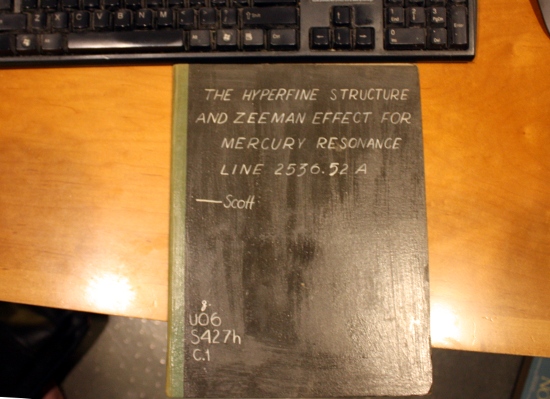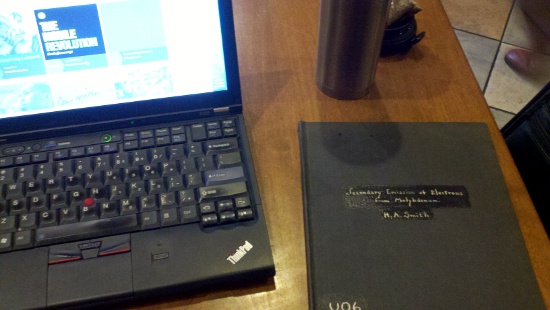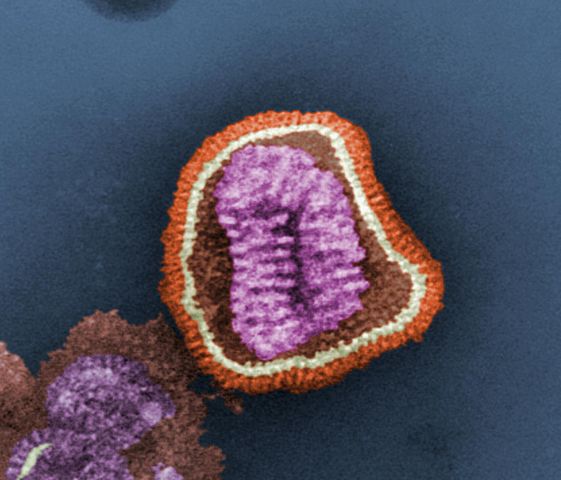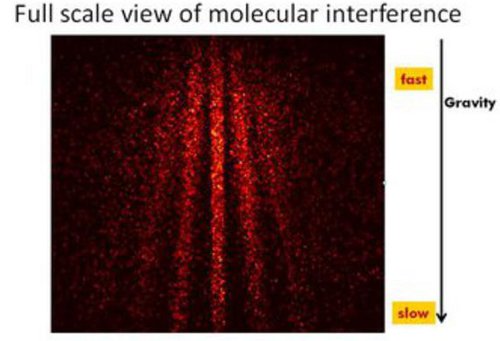Via social media, John Novak cashes in a Nobel Betting Pool win from a while back, asking: Please explain to me the relationship between energy, entropy, and free energy. Like you would explain it to a two year old child. Why? There is a statistical algorithm called Expectation Maximization which is often explained in terms… Continue reading Free, As In Energy
Category: Physics
Quantum Erasure
When I posted congratulating the winner of this year’s Nobel betting pool, I received a gentle reminder in email that I’m a Bad Person and still haven’t done one of the posts I owe to the 2011 winners. Evan reminded me that he asked for something about the delayed-choice quantum eraser, so let’s talk about… Continue reading Quantum Erasure
Old Thesis Club: The Hyperfine Structure and Zeeman Effect for Mercury Resonance Line 2536.52A by Leo Wilson Scott, 1932
Having spent a bunch of time talking about heavy stuff in the science blogging community, let’s unwind a bit and kick the week off with a look back at an old Master’s thesis. This one is from 1932, and is almost certainly a draft copy, because it’s extremely cheaply bound in cardboard with the title… Continue reading Old Thesis Club: The Hyperfine Structure and Zeeman Effect for Mercury Resonance Line 2536.52A by Leo Wilson Scott, 1932
Optics Question: How Did the Photographer Do That?
Yes, that’s another TED@NYC picture as the “featured image,” but don’t run away! It’s a post about science, I swear! The photo up above is from the Flickr set (which, by the way, has been edited significantly since yesterday…), and I like it a good deal. Mostly because, as the joking caption suggests, that photo… Continue reading Optics Question: How Did the Photographer Do That?
Old Thesis Club: Secondary Emission of Electrons from Molybdenum, by H.A. Smith, 1928
As noted in a previous post on Monte Carlo simulation in 1960, we recently came into possession of a large box of old Master’s theses. The bulk of these are from the 50’s and 60’s, but there are some going back much farther. As I pass these every day I’m in the office, I thought… Continue reading Old Thesis Club: Secondary Emission of Electrons from Molybdenum, by H.A. Smith, 1928
Quantum Viruses?
The Twitter conversation that prompted yesterday’s post about composite objects was apparently prompted by a comment somebody made about how a virus left alone would see its quantum wavefunction spread out on a time scale of minutes. This led to wondering about whether a virus could really be considered a particle that would move as… Continue reading Quantum Viruses?
Life Scientists vs. Test Takers
Back in July, Physics Today ran an article on Reinventing physics for life-sciences majors (I couldn’t find an un-paywalled version, but this arxiv preprint seems to be close to it). As I’ve had some bad experiences with that class, I flagged it as something to read, but only got around to it last night. The… Continue reading Life Scientists vs. Test Takers
Supreme Leader of Quantumland
The nice folks at TED have put up a giant Flickr set of pictures from last week’s event. I’m not sure it’s complete, but I happened to notice it this morning, and it already had several pictures of me in it, which is all I really care about. I particularly like the “featured image” above,… Continue reading Supreme Leader of Quantumland
Favorite Quantum Physics in Science Fiction?
I’m doing a bit of work on an idea for physics outreach, which would involve tying a discussion of modern physics to science fiction stories. I have Opinions about this sort of thing, of course, but I also have readers who might think of things I don’t. So, let me throw this out to you… Continue reading Favorite Quantum Physics in Science Fiction?
When Is a Composite Object a Particle?
Through some kind of weird synchronicity, the title question came up twice yesterday, once in a comment to my TED@NYC talk post, and the second time on Twitter, in a conversation with a person whose account is protected, thus rendering it un-link-able. Trust me. The question is one of those things that you don’t necessarily… Continue reading When Is a Composite Object a Particle?






